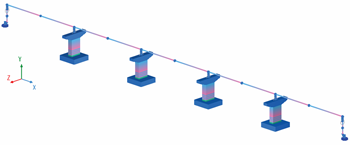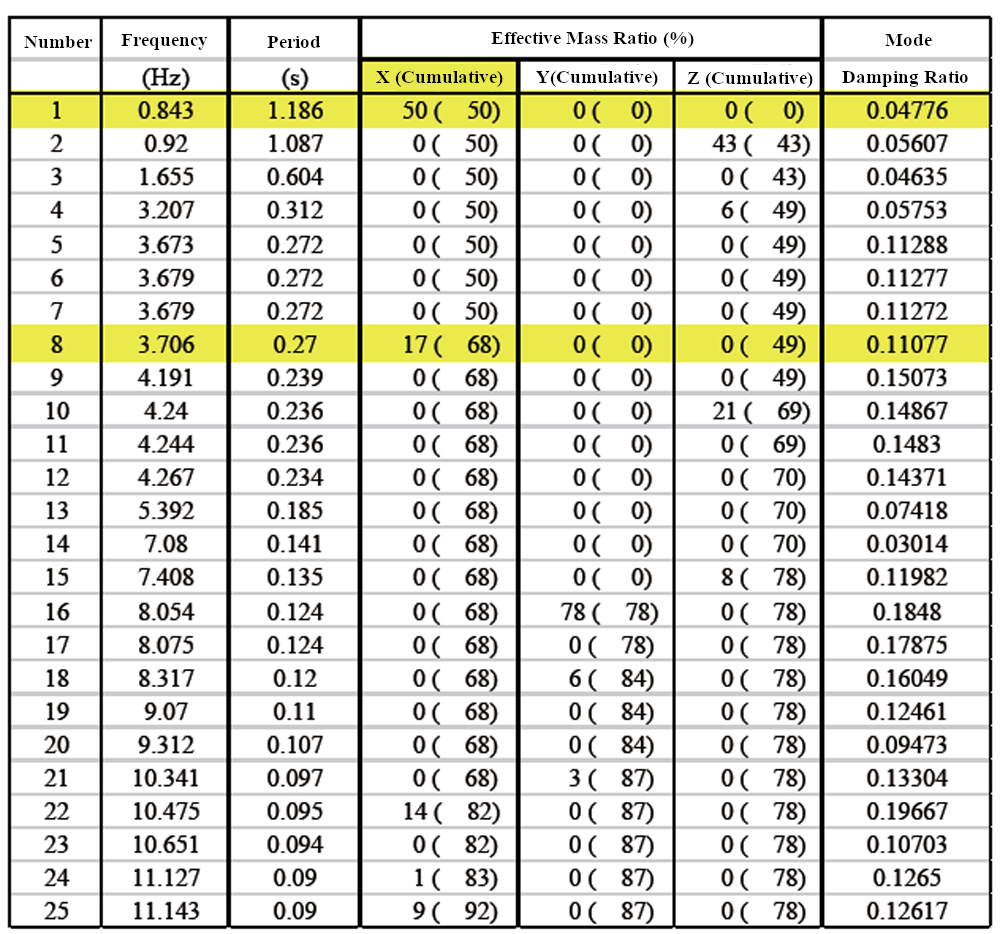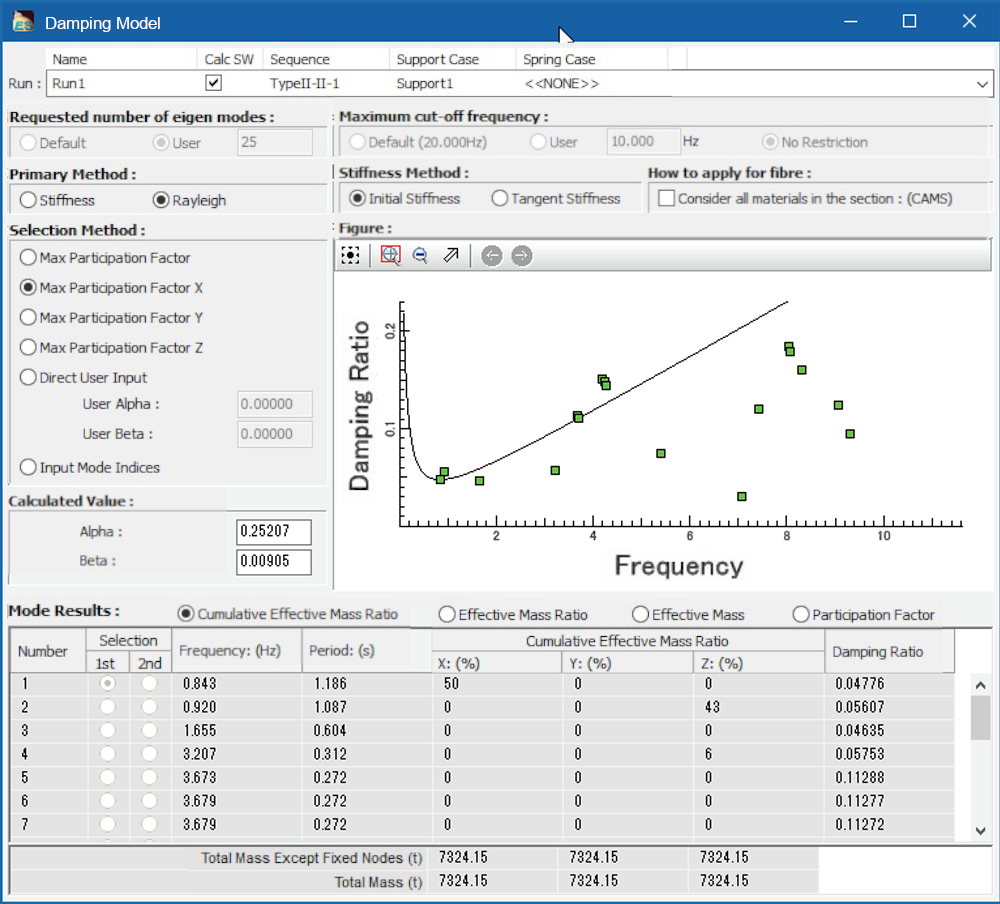| Support Topics | |||
| Support Topics・FEM / Engineer's Studio® | |||
|
|||
As for road bridges, Rayleigh viscous damping models are often used for the dynamic analysis using direct integral. The Rayleigh damping is decided by the natural period and mode damping constants of two best natural vibration modes among the vibration of analyzed bridge. First, execute the eigen analysis and calculate the period and damping ratio in each mode. Next, select two modes that excel as much as possible. Modes having larger max participation factor and effective mass ratio are supposed to be excellence. Note that you need to avoid the negative damping (specifically the negative coefficient α and β for the Rayleigh damping). Here we introduce a standard method of mode selection. The example bridge is a 5-span continuous steel I girder bridge (200 m long), the analysis is executed in the bridge axis direction, and the support condition is elastic. (Fig.1) Result of Eigen Analysis The table below shows the result of eigen analysis. Judging by the effective mass ratio in the overall x-axis direction, the best modes are No.1 and No.8 (in yellow in the table). Mode Shape Check the mode shape of No.1 and No.8. You should check the shaking of the entire bridge rather than the local vibration. The figure 2 shows the mode No.1. Each substructure shakes in the same direction as the shake of superstructure. The figure 3 shows the mode No.8. You can see that each pier shakes though the superstructure shakes less. As an example, the No.22 mode figure which has the 3rd largest effective mass ratio is shown in the figure 4. You can see that only the substructure at the both end (abutments) are shaking. This result is also acceptable to use since the effective mass ratio is relatively big, but we use the mode No.8 from the view of overall shake. Raleigh Damping Setting Calculating from the mode No.1 and No.8, α is 0.25207 and β is 0.00905 for the coefficient of Rayleigh damping. The Rayleigh damping curve by this coefficient is shown in the fugure 5. Conclusion The standard Rayleigh damping settings are as follows: [1] Select a mode with a large effective mass ratio, [2] Select a mode that the entire bridge shakes, [3] Be careful not to make α and β negative. |
|
||
| (Up&Coming '21 New Year issue) | ||
|









